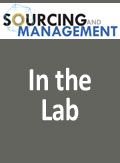API Sourcing, Supply Chain Visibility, and Emerging Markets
Kate Kuhrt, senior director, Generics and Biotech, Thomson Reuters, spoke with Pharmaceutical Technology Europe about sourcing trends, supply chain challenges, the emerging market outlook, and how it affects European pharmaceutical manufacturers.
Globalization of the pharmaceutical supply chain comes with new risks and challenges, especially as emerging markets continue to offer an attractive edge in API sourcing and drug manufacturing. Kate Kuhrt, senior director, Generics and Biotech, Thomson Reuters, spoke with Pharmaceutical Technology Europe about sourcing trends and how they affect European pharmaceutical manufacturers.
PTE: What are the key factors driving API sourcing decisions?
Kuhrt: Sourcing decisions are multi-dimensional. Any potential supplier of API that a pharma company partners with must be able to make the product required in the quantities required. In addition, sourcing trends will reflect market realities. For example, today, there is increased demand for products, such as cytotoxics, where European companies have historically had an advantage.
Once a potential supplier has been identified, a sponsor must perform due diligence and determine whether the company can make the product to specifications, whether it has a strong compliance record and robust regulatory management. Some soul-searching is also required. Sponsors must determine how much risk they are willing to tolerate. Does this manufacturer, for instance, have experience in regulated markets? How much time will be needed to coach them if they don’t?
In addition, sponsors must have a clear ‘Plan B’ in case the source runs into problems. We saw Murphy’s Law in action, clearly, in the recent incidents of noncompliance at Indian API manufacturers. These problems made regulated market players review and redo their sourcing strategies.
And then, of course, there is pricing. Over the past few years, an increasing number of companies have realized that price of the active ingredient is just one of many components in the overall cost of sourcing the API. Any incremental savings from a lower price per kilogram will be wiped out if the manufacturer cannot provide the right quality material at the right time in right quantities to support product launch or ongoing sales activities.
Supply chain visibility
PTE: What are the main challenges facing European pharmaceutical manufacturers when it comes to API sourcing; how should manufacturers address these challenges?
Kuhrt: European pharmaceutical manufacturers, just like others in heavily regulated markets, are struggling to have full visibility into their supply chains and those of their suppliers. With the number of inspections increasing, and more global regulators sharing information, European manufacturers frequently end up scrambling to find new sources of API on short notice.
Since January 2013, the EU has required that all imported APIs be manufactured in compliance with GMP standards equivalent to the standards in the EU or higher than those spelled out in ICH Q7. Compliance to ICH Q7 must be documented by the competent authority of the company exporting the material. Countries outside of EU may also request to be added to the ‘white list’ (i.e., deemed by the European Commission as having a regulatory system for GMP inspections that is equivalent to that of the EU).
There are a number of things that companies can do to mitigate supplier risk. The best approach is to be as selective as possible when choosing manufacturing partners in the first place. In addition, sponsors should not only be ready to work closely with suppliers to help them address any potential issues before they spiral out of control, but also be willing to pay a higher price for better quality product.
Emerging market outlook
PTE: How are emerging markets affecting API sourcing? And what is the outlook for European pharmaceutical manufacturers?
Kuhrt: Developments in emerging markets are affecting API sourcing in a number of different ways. Emerging markets are among the most rapidly growing pharmaceutical markets and, as such, they are increasing the demand for active ingredients to support local finished dose sales. Many API manufacturers in China, for example, have made a conscious decision to serve the demands of the local market and not spend precious resources on pursuing the highly regulated markets of the United States and Europe.
As costs in India and China continue to rise, and the price differential with Europe decreases, many dose companies in the US and Europe are looking at alternatives to India and China, ideally closer to home. We keep hearing about the possibility of API manufacturing moving from India and China to the next wave of low-cost manufacturing locations. While this may happen over the next decade, the API industry is not something that can be built up overnight. It requires the right facilities, the right talent, and the right know-how. In time, South Korea, Taiwan, and Eastern European nations, for example Poland, could be alternatives to India and China. However, it is unlikely that they can offer consistently lower prices than India and China anytime soon, across a wide range of products.
Other markets, such as Brazil, Russia, and Ukraine, currently lack the experience to be credible sources of active ingredients to North America or Europe.

Drug Solutions Podcast: A Closer Look at mRNA in Oncology and Vaccines
April 30th 2024In this episode fo the Drug Solutions Podcast, etherna’s vice-president of Technology and Innovation, Stefaan De Koker, discusses the merits and challenges of using mRNA as the foundation for therapeutics in oncology as well as for vaccines.